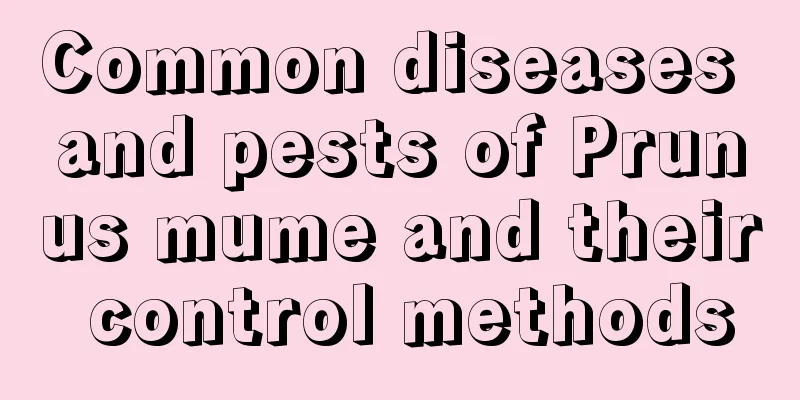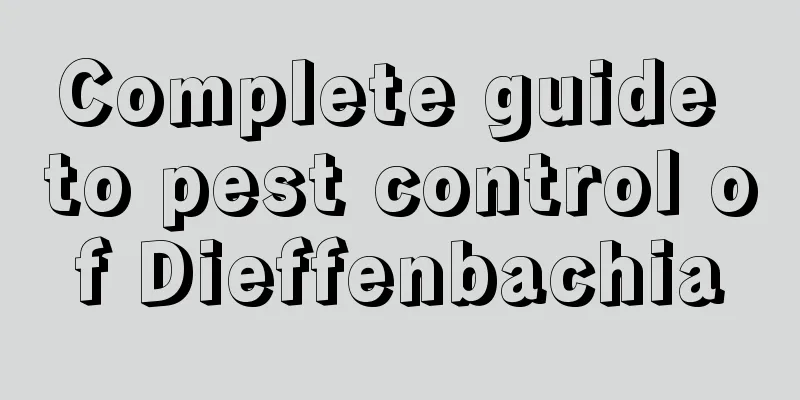Common diseases and pests of Prunus mume and their control methods

Common diseases of five-color plum: gray moldSymptoms of gray mold disease in five-color plumThe pathogen first invades from the tips of the petals. After the disease occurs, the petals become water-soaked, soft, faded, and lose their luster. Finally, the petals turn brown and rot, and the flowers fall off. Under humid conditions, a gray mold layer forms on the surface of the diseased part. The pathogen overwinters in the form of sclerotia or mycelium on the remains of diseased plants. The following spring, the disease will spread through wind and rain, causing harm. Low temperature, high humidity and poor ventilation are conducive to the development of the disease. This disease occurs more frequently in greenhouses. But flower lovers who grow flowers on balconies and in flower beds should not take it lightly. Prevention and control methods of gray mold disease of five-color plumPaying attention to ventilation and reducing humidity can reduce the occurrence of diseases. Remove spent flowers promptly, burn them in batches or bury them deep in the soil to reduce the source of disease. In the early stage of gray mold disease of Prunus armeniaca, you can spray 1:200 Bordeaux mixture, or 2000 times diluted 50% procymidone wettable powder, or 1500 times diluted 50% parkhain wettable powder once every two weeks. The number of sprayings depends on the disease situation. Common pests of five-color plum: leaf blight nematodesSymptoms of Plum Leaf Blight Nematode PestWhen leaves are invaded by nematodes, the leaf color becomes lighter and has light brown spots, which gradually darken to almost black. As the lesion expands, it becomes an angular spot due to the restriction of the main and lateral veins. In severe cases, the entire leaf blade dies, curls up, and droops along the stem. Most nematodes are in the slightly discolored areas, and only a few are found on leaves that have turned dark brown or black. Leaf blight nematodes overwinter in the plant roots and surrounding soil, on diseased plant debris and in wild hosts. Even on the smallest leaf residues, it can survive in the soil for 6 to 7 months. The entire development process of leaf blight nematodes is completed in the invaded tissues. When conditions are suitable (22-25°C, sufficient humidity), it takes only 14 days from egg development to egg laying by female adults. It is usually transmitted through contact between water droplets, irrigation water and diseased and healthy leaves, and over long distances it is transmitted by humans through diseased leaves, flowers, stems, cuttings and soil. Invades through the stomata on the leaves. Methods for controlling five-color plum leaf blight nematodesIn gardening, diseased soil and soil with a lot of weeds should not be used in potted plants; improve the watering method, it is best not to water it, and keep the leaves as dry as possible. There should be appropriate gaps between potted flowers to prevent the leaves from touching each other. For chemical control, you can use 15% aldicarb granules, 5 to 6 grams per square meter of potting soil, or 2 to 3 grams for a pot with a diameter of about 25 cm, and apply it deeply into the soil. Or use 3% furadan, and apply 3 to 5 grams per pot deeply into the soil. During the infestation period, you can also spray the leaves with 1000 times diluted 50% cypermethrin emulsion, 50% carbaryl and 50% cypermethrin wettable powder. |
<<: Diseases and prevention methods of Albizia Julibrissin
>>: Common diseases of zinnia and their prevention and control methods
Recommend
Garlic vine cultivation methods and precautions
How to grow garlic vine Pot soil selection When g...
How to water Chiva Lotus
How much watering is important The Chiva Lotus pl...
How and when to plant green onions
Green onion planting time and month When to plant...
How to care for hibiscus and what should be paid attention to
1. Maintenance and management methods 1. Adequate...
What should I do if the flowers become smaller and smaller?
Why do the flowers I buy become smaller and small...
How to behead the peach beauty
1. Choose the right location for beheading Caused...
How to grow succulent money tree
The soil that nourishes money strings: Soil is th...
The cultivation method and precautions of Polygonum multiflorum
1. Maintenance methods 1. Soil: It can grow well ...
Disease and Pest Control of Rhododendron australis
Main diseases Leaf swell There are three main dis...
Suitable temperature for leek growth, leek growth cycle
1. Suitable temperature for growth The suitable t...
The reasons and solutions for the yellowing of yew leaves
Yew is a rare plant. Now there are many artificia...
How often should I water the lucky flower?
How often should I water the lucky flower? Genera...
When is the best time to plant onions?
Scallion is a widely used seasoning vegetable tha...
How to remedy overwatering of succulents, how to water succulents correctly
1. Drain water in time Succulents are very drough...
Where is the best place to plant avocado trees? What are the planting conditions?
Where to plant avocado trees Avocado is native to...









